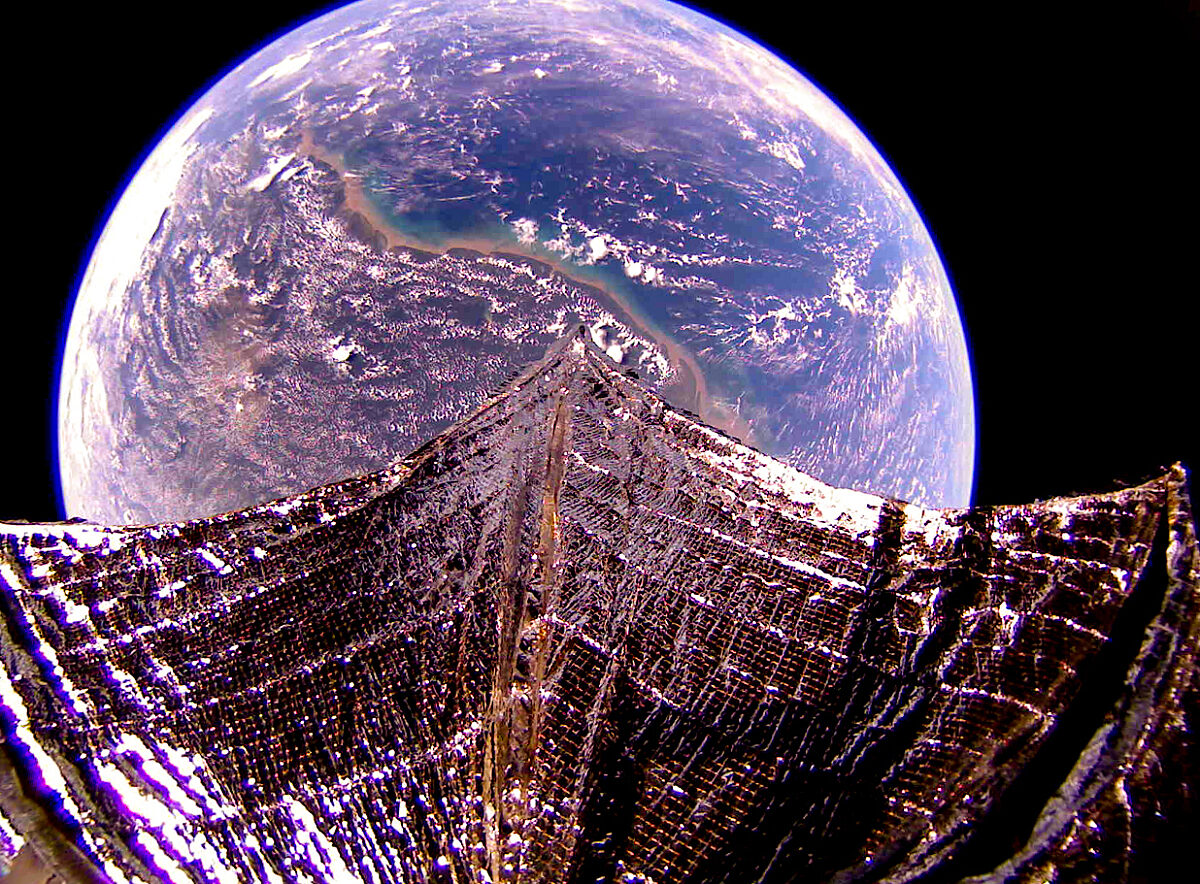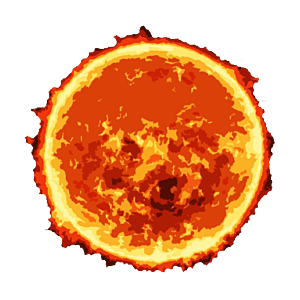The Downlink • Aug 13, 2021
LightSail 2 Sails On!
Space Snapshot

We might be biased, but we think that photos of the Earth look best when there’s a beautiful solar sail in the shot. This image is one of many astonishing photos our solar sailing spacecraft LightSail 2 has sent home since launching in 2019. It shows French Guiana, Suriname, Guyana, and the Atlantic Ocean. Image credit: The Planetary Society.
You love space, now take action
This weekly newsletter is your toolkit to learn more about space, share information with your friends and family, and take direct action to support exploration. Anyone can subscribe at planetary.org/connect to receive it as a weekly email.
Mission Briefings


Venus had an unusually busy week: two spacecraft popped over for a quick visit. On August 9, NASA and ESA’s Solar Orbiter whizzed by Venus, followed up by ESA and JAXA’s BepiColombo spacecraft on August 10. The back-to-back flybys are exciting because they offer a unique opportunity to study Venus from different vantage points at nearly the same time. They’re also logistically important because both spacecraft need a gravity assist from swinging around Venus in order to reach their final destinations: the Sun (Solar Orbiter) and Mercury (BepiColombo). Pictured: an image from BepiColombo’s flyby. Image credit: ESA/BepiColombo/MTM

NASA says the first Mars rock Perseverance tried to sample was too crumbly. Engineers were initially puzzled after post-sampling images revealed the rover didn't collect a rock core as expected. Perseverance is collecting samples that will eventually be returned to Earth by future spacecraft. The mission team says it will move on to other sampling locales where the rocks are expected to resemble those used during Earth-based testing.

NASA’s new spacesuits are delayed, complicating a 2024 lunar landing. A report from NASA’s inspector general says that funding shortfalls, COVID-19 impacts and technical challenges have pushed Exploration Extravehicular Mobility Unit (xEMU) development substantially behind schedule: the suits may not be ready until 2025 at the earliest. NASA has so far stuck by its plan to return astronauts to the Moon by 2024, though NASA Administrator Bill Nelson has previously said to expect delays.

NASA researchers have used OSIRIS-REx spacecraft data to project asteroid Bennu’s movements through 2300. Thankfully, the 500-meter-wide asteroid is not expected to be a serious danger to our planet during that period: Its chances of hitting Earth in 2182 are about 1 in 2,700.
From The Planetary Society


You’re invited! Join our CEO Bill Nye for our live virtual premiere of “Sailing the Light,” a gorgeous 35-minute documentary about the game-changing LightSail 2 mission. Following the film, Bill and mission team members will host a live Q&A. You don’t want to miss it, so set your reminders now! The show starts Saturday, August 28 at 1 p.m. ET (17:00 UTC) on YouTube Live.

The LightSail mission continues to pave the way for solar sailing. NASA’s Advanced Composite Solar Sail System, or ACS3, set to launch in 2022, is building on the groundwork that LightSail 2 established. ACS3 will test new sail boom materials that might be used someday to support larger sails for bigger spacecraft. Every LightSail 2 supporter helped make this next step in solar sailing technology possible, so thank you to all our members and mission backers!

Doing work on Mars requires technologies that still feel like they belong in futuristic sci-fi. Rovers like Perseverance have software that allow them to drive autonomously, as NASA Jet Propulsion Laboratory space roboticist Vandi Verma discusses on this week’s Planetary Radio. And getting humans to the Red Planet might require methods of propulsion unlike any we’ve seen before, as we learn in this month’s Planetary Radio: Space Policy Edition. All in all, it’s clear that space exploration is a phenomenal driver of innovation.

Titan, a moon of Saturn nearly the size of Mars, is much more than just a moon. It’s a dynamic world with rivers, lakes, and seas made mostly of liquid methane, mountains of rock-hard water ice, and conditions that just might be hospitable to life. Learn more about Titan, and find out why scientists are eager to explore this intriguing world.
What's Up

This week Venus appears very bright in the west shortly after sunset, as Jupiter and Saturn rise in the east and shine brightly until they set in the west. The Perseid meteor shower is winding down, but keep an eye out for the occasional meteor streaking across the sky. Learn more at planetary.org/night-sky.
Wow of the Week

More than two years after launching, The Planetary Society’s crowdfunded LightSail 2 spacecraft is going strong and still making history. Its primary mission accomplished, LightSail 2 is now on an extended mission to continue advancing solar sailing and we need your help to capture the science from this next phase and share its lasting impact with the world.
Your support will keep LightSail 2 in orbit, share the science of solar sailing with NASA and other space explorers, and inspire people around the world to get involved in amazing projects like this. Join the Extended Mission Team and support this historic project with your gift today.
Pictured: Planetary Society supporter Stephen Marr used a long exposure to capture this image of the light of the rocket launching LightSail 2, along with a special encouraging message written with light. People like Stephen are passionate about this mission because it was through their support that it was made possible. Join the team today! Image credit: Stephen Marr.


 Explore Worlds
Explore Worlds Find Life
Find Life Defend Earth
Defend Earth


